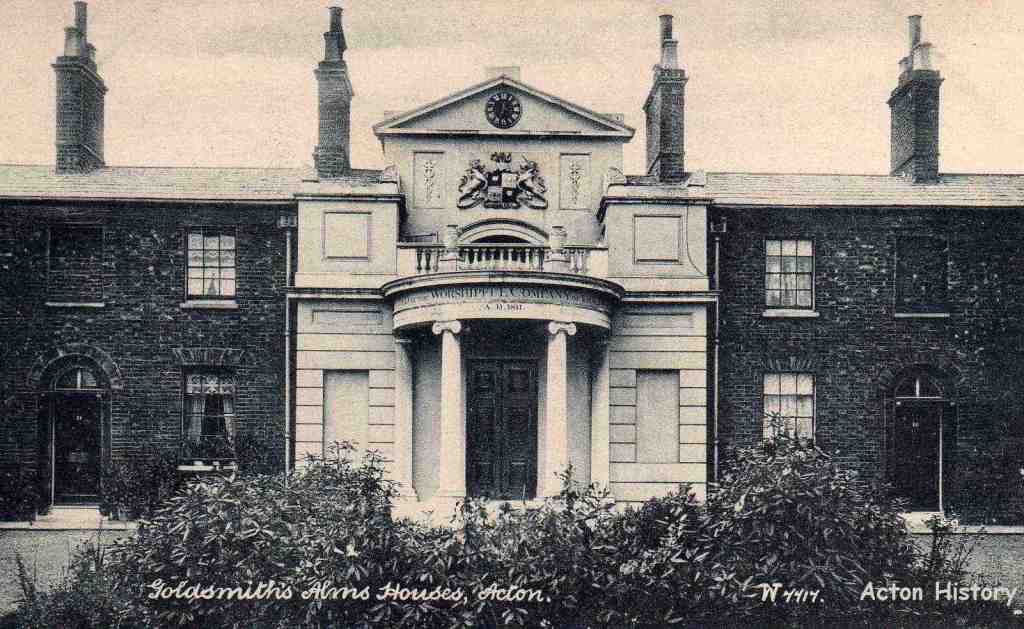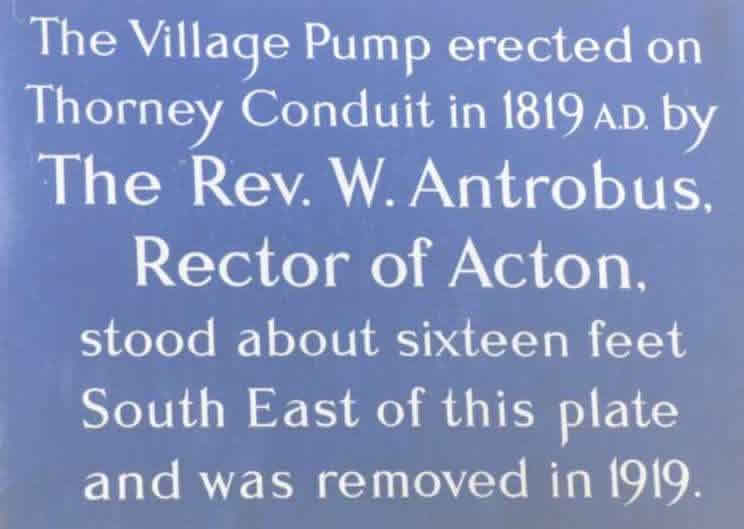
The famous Goldsmith John Perryn lived for a short time in a large house on

The Goldsmith's Almshouses Churchfield Road East in about 1905.


In the year l808 a scheme was drawn up for the erection of almshouses on Goldsmiths' Company property and in 1810 the site at
The Almspeople were chosen from the Settled Pension List and were always the oldest on the list. They each received £100 a year in addition to their regular pensions and 1½ or 2 cauldrons of coal. On the annual visitation the Wardens presented the inmates with £1 apiece.
The Rules and Regulations were stringent, for example:- It was compulsory to attend Church twice every Sunday. The main room was, later turned into a chapel.
Acton Cemetery

The two Chapels Anglican and Non-Conformist

The Cross of Sacrifice erected by the Imperial war Graves Commission as a memorial to those who were lost in the First World War, and subsequently the Second World War, who are buried in the cemetery, but for whom there is no marked grave. A full list of those commemorated is available on the Commonwealth War Graves Website.
Acton Cottage Hospital was initially the gift of J Passmore Edwards

It was extended after both world wars as a War Memorial.
Acton Pump

The Acton Pump is on The Mount, by the North-West Door of St. Mary's Church. It was originally located in the High St., where it had replaced an earlier conduit which previously had supplied the locality with water. It was removed to Woodlands Park when the High Street was set back in 1919. In 1952, it was taken to Gunnersbury Park and stored. The Acton Charities requested its return and funds were raised for the restoration by Dorothea Restorations. The pump is inscribed "1819 T. FREETHY, MAKER, ACTON, ERECTED BY THE REV WM. ANTROBUS" (a longstanding rector of the parish).
Acton Milepost
The highway known as the "Uxbridge Road" was turnpiked (made into a toll road to pay for maintenance) by the Uxbridge Turnpike Trust in the early 18th century. The distances were measured from Tyburn (Marble Arch) and there was a tollgate at the 4-mile post, about where now Bromyard Avenue joins the Uxbridge Road. Acton being a mile further on.
Postcard images on this page have been provided courtesy of Mr Paul Lang. It is believed that all the images of old postcards on this page are out of copyright.